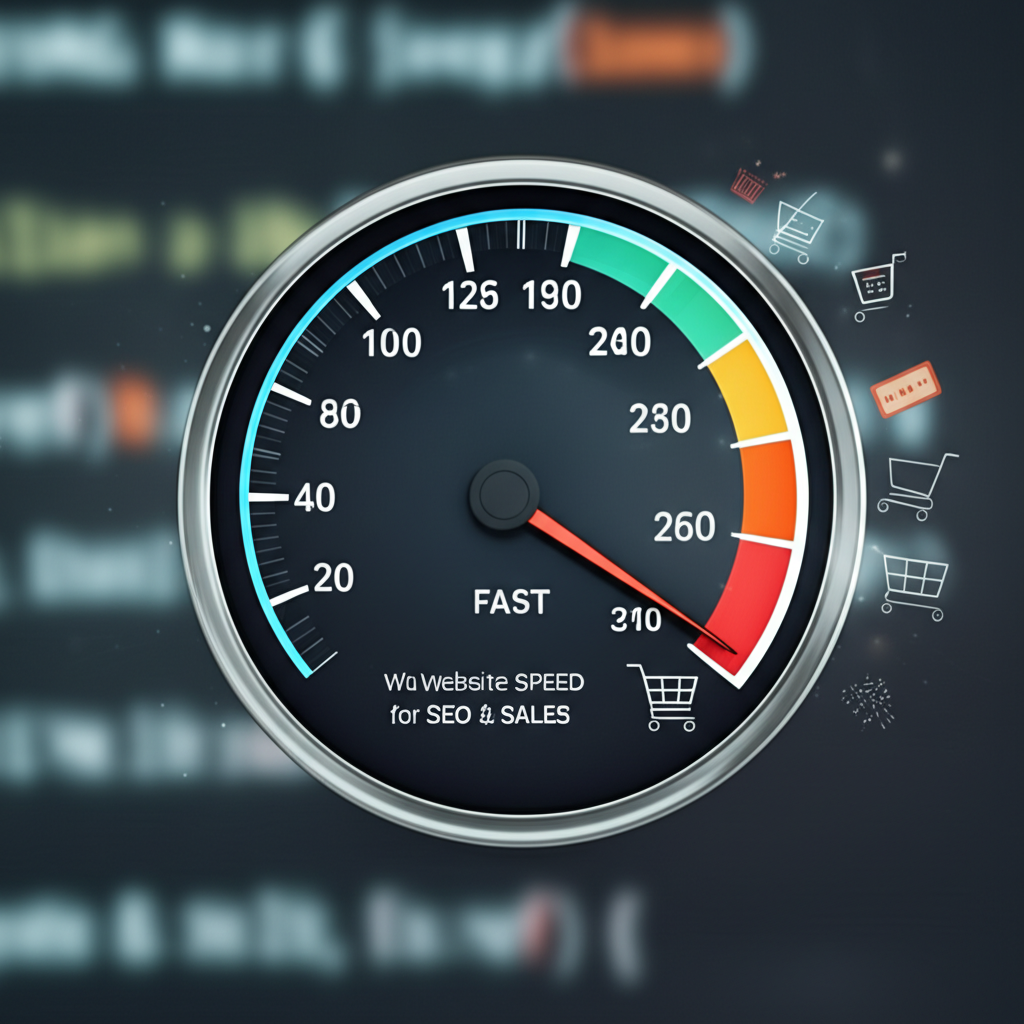- Why Website Speed Matters for SEO
- Impact of Core Web Vitals on Website Speed and SEO
- Website Speed: A Critical Factor for Increased Sales
- The Impact of Slow Loading Times on User Behavior
- Mobile Website Speed: Essential for Conversions
- Optimizing Your Website for Speed
- Monitoring Website Speed and Performance
- Website Speed: An Investment, not an Expense
Website Speed: Crucial for SEO & Sales
Website speed is a critical factor for both search engine optimization (SEO) and sales. In today’s fast-paced digital world, users expect websites to load quickly and efficiently. A slow website can lead to a poor user experience, increased bounce rates, and ultimately, lost revenue. Understanding the importance of website speed and taking steps to optimize it is essential for any business that wants to succeed online.
Why Website Speed Matters for SEO
Google has explicitly stated that page speed is a ranking factor for both desktop and mobile searches. A faster website improves the user experience, which Google considers a top priority. When a website loads quickly, users are more likely to stay on the site longer, explore more pages, and engage with the content. This positive user behavior signals to Google that the website provides valuable information and deserves a higher ranking. Conversely, a slow website can lead to a higher bounce rate (users leaving the site after viewing only one page), which negatively impacts SEO.
Impact of Core Web Vitals on Website Speed and SEO
Core Web Vitals, a set of metrics focused on user experience, further emphasizes the importance of website speed for SEO. These metrics, including Largest Contentful Paint (LCP), First Input Delay (FID), and Cumulative Layout Shift (CLS), measure aspects like loading performance, interactivity, and visual stability. Optimizing for Core Web Vitals not only improves your website’s ranking but also creates a smoother and more enjoyable browsing experience for your users.
Website Speed: A Critical Factor for Increased Sales
Beyond SEO, website speed has a direct impact on sales. Studies have shown a strong correlation between page load time and conversion rates. Even a one-second delay in page load time can result in a significant drop in conversions.
The Impact of Slow Loading Times on User Behavior
Slow loading times lead to frustration and impatience, causing users to abandon their shopping carts and look for alternatives. This lost revenue can be substantial, particularly for e-commerce businesses. Furthermore, a slow website can damage a brand’s reputation, as users associate slow loading times with unprofessionalism and unreliability.
Mobile Website Speed: Essential for Conversions
With the majority of internet traffic now coming from mobile devices, optimizing mobile website speed is more crucial than ever. Mobile users are often on the go and have even less patience for slow loading times. A fast mobile website is essential for capturing mobile conversions and maximizing sales.
Optimizing Your Website for Speed
Fortunately, there are several effective strategies for improving website speed. Here are some key techniques:
Optimize Images: Large image files are a common culprit for slow loading times. Compressing images without sacrificing quality can significantly improve website speed. Using modern image formats like WebP can also lead to substantial improvements.
Leverage Browser Caching: Browser caching allows users’ browsers to store static assets like images and CSS files, reducing the amount of data that needs to be downloaded on subsequent visits.
Minify CSS and JavaScript: Minifying CSS and JavaScript files removes unnecessary characters and whitespace, reducing file sizes and improving download speeds.
Use a Content Delivery Network (CDN): A CDN stores your website’s files on servers located around the world, allowing users to access content from a server closer to their location, reducing latency and improving loading times.
Choose a Fast Web Host: Your web hosting provider plays a significant role in your website’s speed. Opting for a reliable and high-performance hosting plan is essential for optimal performance.
Implement Mobile-First Design: Designing your website with a mobile-first approach ensures that the mobile version is optimized for speed and usability, providing a seamless experience for mobile users.
* Minimize HTTP Requests: Each element on your webpage, such as images, scripts, and stylesheets, requires a separate HTTP request. Reducing the number of these requests can significantly improve loading times.
Monitoring Website Speed and Performance
Regularly monitoring your website’s speed and performance is crucial for identifying potential issues and ensuring optimal loading times. Tools like Google PageSpeed Insights, GTmetrix, and WebPageTest provide valuable insights into your website’s performance and offer recommendations for improvement. These tools can help you track your progress and identify areas that require further optimization.
Website Speed: An Investment, not an Expense
Investing in website speed optimization is not merely an expense; it’s an investment in your online success. By prioritizing website speed, you can enhance your SEO, improve user experience, boost conversion rates, and ultimately, drive revenue growth. In the competitive online landscape, website speed is no longer a luxury, but a necessity for businesses that want to thrive.











Leave a Reply